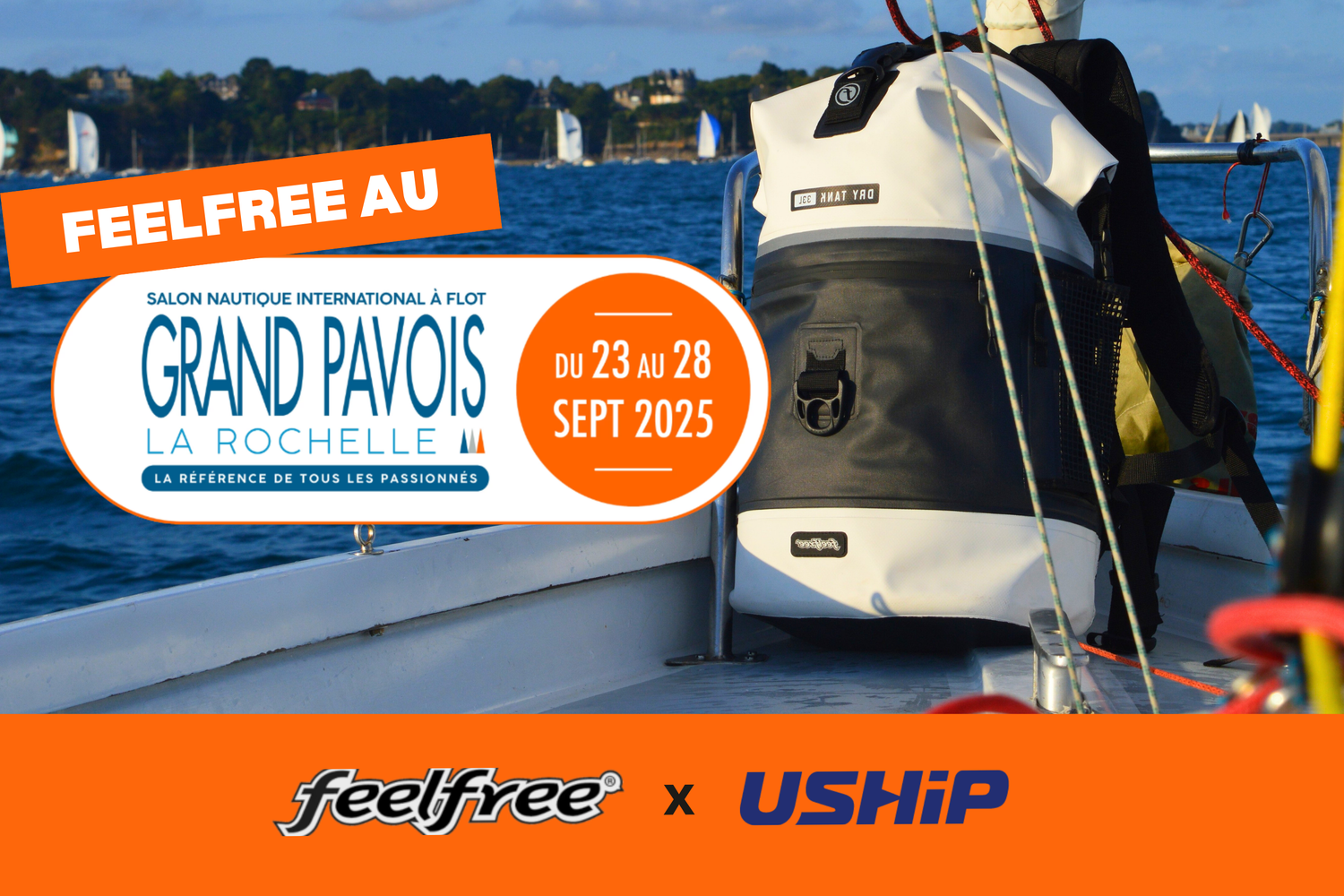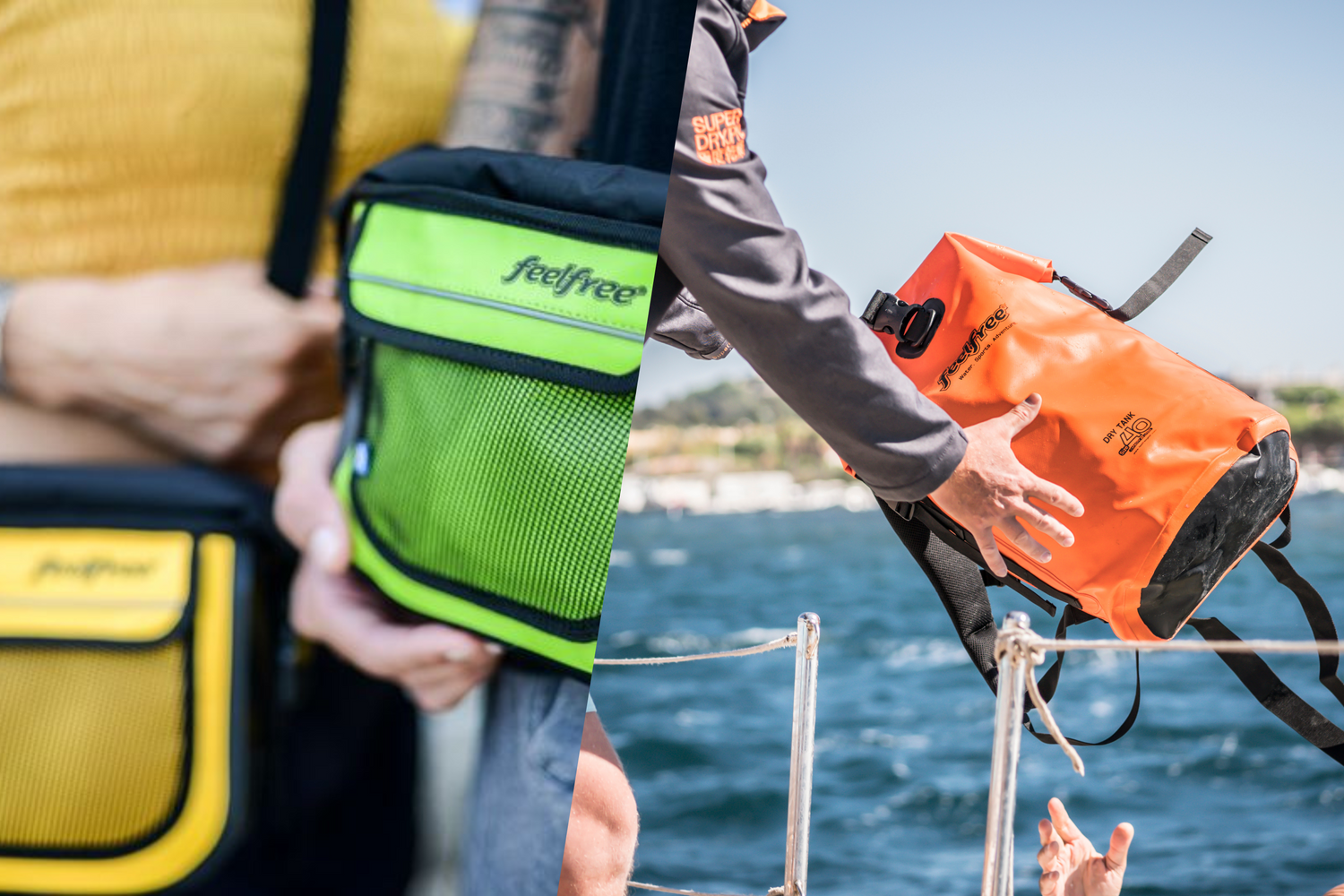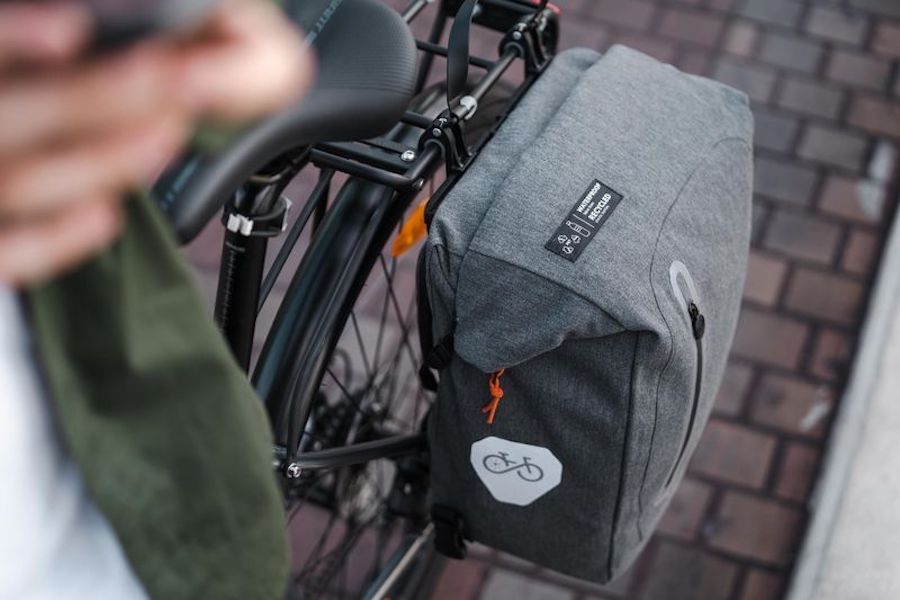Since the creation of the Feelfree brand in 1998, we have been able to carve out a place of choice in the high-end waterproof luggage sector. Our products owe their reputation to our unique know-how in designing waterproof and durable bags. To guarantee the waterproofness of our bags, we implement unique manufacturing processes, based on the use of innovative and efficient technologies.
Find out what technologies we use to design our bags and guarantee their waterproofness.
The different levels of waterproofness of Feelfree bags
All bags offered by the Feelfree brand (backpacks, Dry Tube bags, transport bags, satchels, handbags, smartphone pouches, bicycle bags and coolers) are waterproof bags. To inform our customers and guarantee the transparency of our products, we have set up a system allowing everyone to quickly identify the waterproof level of their bag.
We have therefore defined three distinct levels of waterproofness for our bags:
- Level 1: RAIN-PROOF
- Level 2: WEATHER-PROOF
- Level 3: WATER-PROOF



A RAIN-PROOF bag is a bag that is waterproof against light rain. This is the lowest level of waterproofing. If your bag is RAIN-PROOF, this means that it will remain perfectly waterproof in light rain. Bags recognized as RAIN-PROOF can be used on a daily basis, under normal conditions of use.
WEATHER-PROOF bags are designed to withstand all bad weather. A WEATHER-PROOF bag will not fear heavy rain or splashing water. If your bag has the WEATHER-PROOF waterproof level, you can use it daily, but you can also use it for hiking or water activities. It will be perfect for protecting your belongings against humidity.
100% WATER-PROOF bags are the models with the highest level of waterproofing. WATER-PROOF bags are designed to remain perfectly waterproof, even in the event of brief immersion. If you want to practice a water activity presenting a significant risk of you falling into the water (paddle, surfing, canoeing, etc.), equip yourself with a WATER-PROOF bag to effectively protect your belongings.
The waterproof level of our bags is defined according to their characteristics:
- The materials used for their design: tarpaulin, polyurethane synthetic leather, canvas, recycled plastic (PET fabric)
- Their structure: if the fabric is welded, sewn or assembled with a seam seal
- The type of closure used: classic zip, waterproof zip or 3-ply roll-up closure system

The materials used to design our bags and the level of waterproofing provided
To guarantee the waterproofness of our bags, we only use textile materials known for their strength and durability. All Feelfree waterproof bags are made of synthetic leather, waterproof canvas (canvas), tarpaulin (tarpaulin) or recycled plastic.
1. The Tarpaulin
Tarpaulin refers to a 0.7 mm thick four-fibre tarpaulin. It is a 100% waterproof material, resistant to stretching, durable and easy to clean. As with all the fabrics we use to make our waterproof bags, we apply a durable antibacterial treatment to our tarpaulins.
2. The canvas
Canvas is a waterproof canvas which is made from polyester threads which have received special treatment. A transparent polyurethane coating is applied to this canvas to guarantee its waterproofness and solidity. This allows it to be three times more resistant than a traditional cotton canvas. This also gives it better UV resistance, while allowing it to maintain great flexibility.
3. Polyurethane synthetic leather
The use of laminated synthetic leather with a polyurethane coating makes it possible to design waterproof bags offering waterproofing and durability.
4. Recycled plastic (PET fabric)
At Feelfree, we are very invested in issues relating to environmental preservation. This is why we have developed a unique material in the world, made entirely of recycled plastic. We developed this innovative material from the recycling of plastic bottles. With PET fabric, our ambition was to create a material that was both resistant and durable, to design high-quality waterproof bags while respecting the planet.

The technologies implemented to guarantee the waterproofness of our bags
To guarantee the waterproofness of our bags and reinforce their structure, we have developed innovative technologies. We present these technologies to you, in order to show you the rigor of the design of our waterproof bags.
1. HDW technology
This technology is based on the use of several layers of breathable fabrics to promote the absorption and evacuation of moisture, in order to guarantee the waterproofness of the bag. A layer of vertical pile fiber sits between two layers of polyester to allow moisture to escape easily.
2. DWR (durable water repellent) technology
This technology consists of applying a water-repellent coating to a textile to ensure its lasting waterproofness. The bags which are designed using DWR technology are made up of three layers of transparent polyurethane to which is added a layer of water-repellent cotton canvas providing additional protection against UV rays. A final transparent polyurethane coating completes the structure of the bag, to provide it with complete waterproofing against humidity. Raindrops no longer penetrate the fabric, but simply slide over it.
3. High frequency welding
Using the high frequency welding technique allows us to create extremely strong welds for our waterproof bags. This technique consists of clamping the elements to be assembled between two dies and subjecting them to high frequency tension. This tension will cause the molecules of the material to vibrate, thus creating sufficient heat to allow the different elements of the bag to assemble. The high-frequency welding technique is more effective than any seam in guaranteeing the strength and waterproofness of a bag.
4. The seal or seam tape
The seam seal is the technique we use to assemble the bags which cannot support the high frequency welding technique. This technique involves placing a polyurethane film under the seams to prevent water from penetrating the material.





